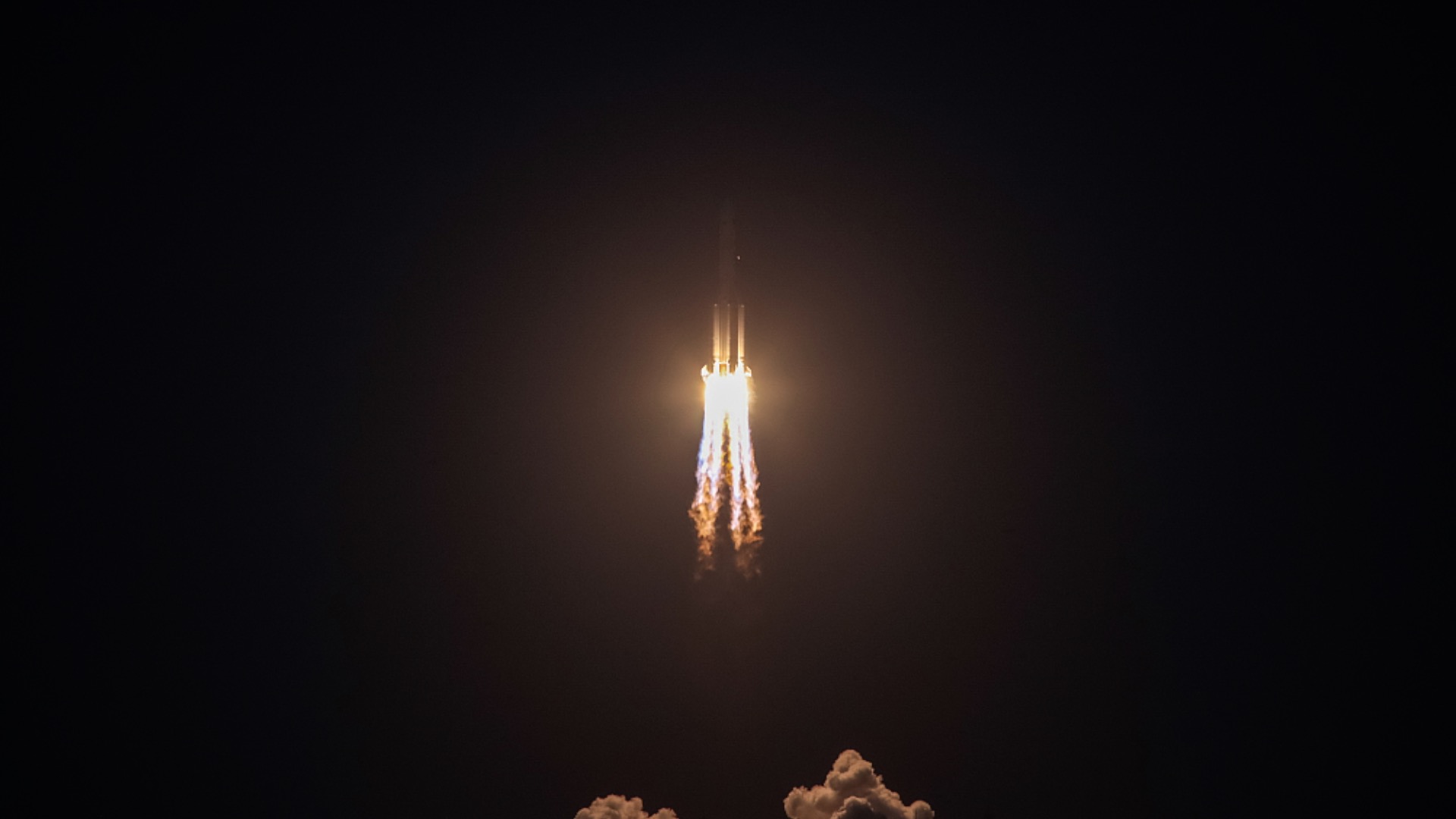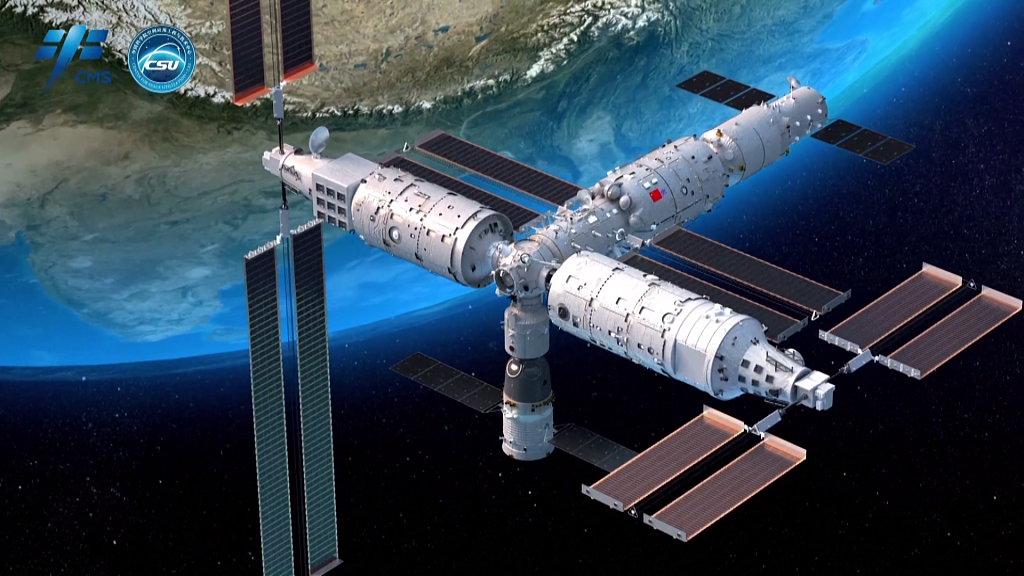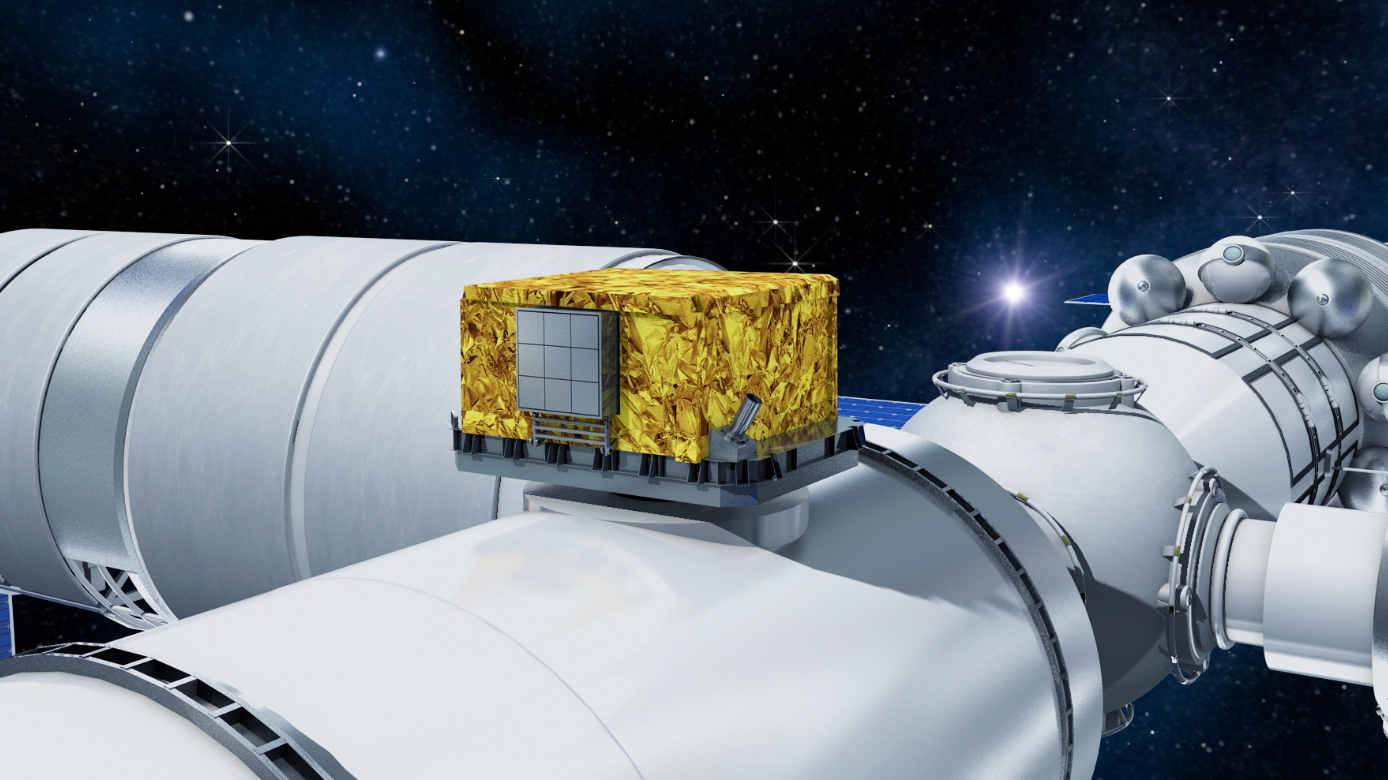02:34

Editor's note: When China Space Station starts operating as the National Space Lab, it will run for at least a decade and cover a whole range of scientific research projects, from biology to cosmology. CGTN will explain how these projects work and what they would mean for people on the ground.
There could soon be small fires onboard the China Space Station (CSS) – but don't worry, the fires will be safe, orchestrated and closely-monitored. Studying these flames would contribute to combustion science studies.
Liu Yucheng, associate professor with the Center for Combustion Energy at Tsinghua University showed CGTN in a ground experiment how the first flame would ignite in the same way in the combustion science rack in CSS, (the rack is partly-developed by his team), hopefully within this year.
Liu said the space flames would look different from the one he creates on earth. "The flame in space will look bigger, due to lack of buoyancy."
And the flames would be totally safe. "What we are going to create are very small flames in space. This is the bottom line and all the combustion chamber design is able to endure three times the pressure that is needed for typical combustion experiments that would be carried out in space."
The first such experiment in the China Space Station would look closely into how the space flames would light, burn and be extinguished to answer some fundamental questions in the field. Liu said combustion is one of the issues perfect for space experiments where the unwanted elements on the ground can be removed.
He also said CSS's combustion science rack is unique in giving scientists research materials. "In the Chinese space station, the Combustion Science Rack actually provides the technique that essentially helps scientists to visualize the flow using particles. We have high speed cameras to perform what we call soot temperature reconstruction. And we are able to reconstruct the 3D structure of a flame in space."
"Those are very special functionalities that the International Space Station (ISS) did not have," he said.
03:27

Landmark apparatus on CSS
"This will be the largest experiment on the China Space Station," astrophysicist Zhang Shuangnan told CGTN, showing an essential part of the High Energy Cosmic-Ray Detector, or HERD. And HERD, when completed would be "the largest experiment on CSS."
Zhang, professor with Institute of High Energy Physics at the Chinese Academy of Sciences said HERD would be such a landmark that "if you have a telescope looking up, this will be the only thing you can identify. It will be a landmark."
Size aside, many have viewed HERD a "flagship" experiment because when operating, it is poised to provide some unprecedented understanding of dark matter, and the universe. And the understanding would come from unprecedented data that HERD would receive.
"The goal of the experiment is that we will detect the most active energy particles in space with the highest precision. That's the goal. This is why we design the experiment to have this large dimension to have this weight, and to be able to receive particles from all directions," Zhang said.
HERD would weigh around 4 tonnes, and for years it's also been a heavy-weight project that has attracted the best minds from China and around the world. The team working on HERD include over 200 scientists, more than half of them from Europe. The other half is mostly from the Chinese mainland, as well as Hong Kong Special Administrative Region and Taiwan region.
"Each institute contributes its best technology so that we work together. We can build the best experiment in the world. We hope when it is delivered to China Space Station, it will be the leading experiment in this field for at least 10 years and we hope even more," Zhang said.
He said they hope that HERD, a project that started 15 years ago, could arrive at the CSS in the next five years.

HERD is estimated to weigh around four tonnes. /Institute of High Energy Physics under Chinese Academy of Sciences
HERD is estimated to weigh around four tonnes. /Institute of High Energy Physics under Chinese Academy of Sciences
Experiment on black holes
Zhang's team has another international co-operative experiment that could be on board sooner.
It's a larger study on gamma-ray bursts called POLAR 2, that will help understand black holes. It follows up on project POLAR that was carried out on China's Tiangong-2 space lab in 2016.
"China Space Station has many unique capabilities. In particular, When the ISS is running down to the end of its lifetime, it will be very difficult to accommodate new experiments on the international space station, at least it's very uncertain what's going to happen to it. So China's space station may be the only opportunity for international scientists if they must use this kind of laboratory for the experiment," Zhang said.
As for what China Space Station would mean for findings, Zhang is optimistic. "This is not a question of if we will set world records, but exactly what the records are," he said.
"We do not know because it's a completely unknown frontier. In all scientific research, when you are at the very forefront, you don't know what's beyond. You only can make your best effort, build the best instrument and wait for what the nature and the universe tell us."